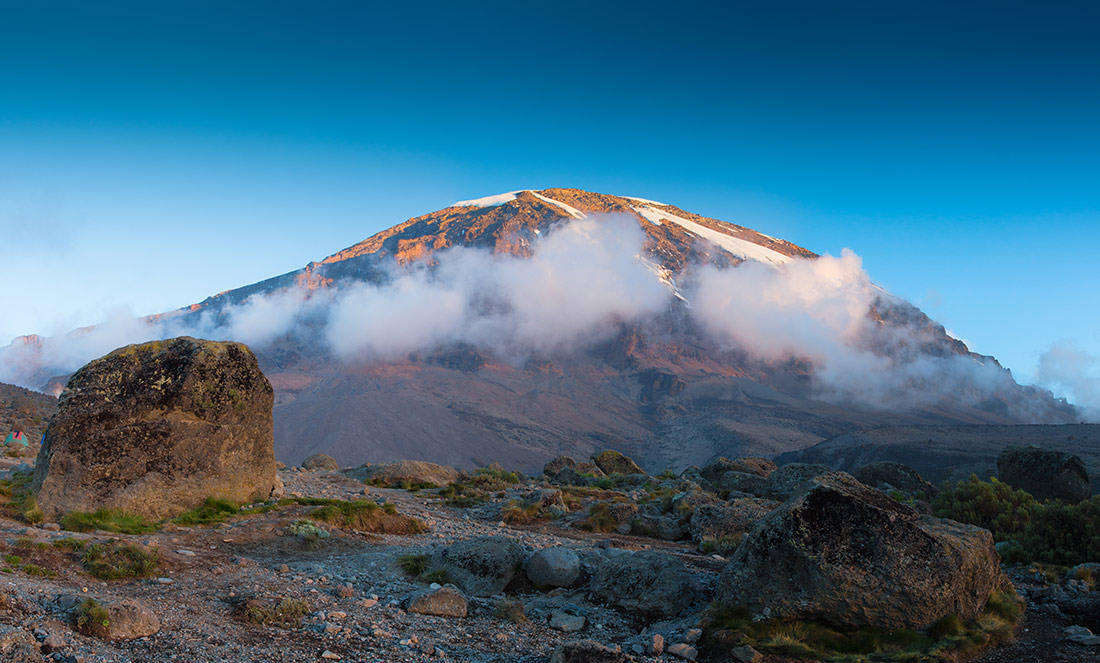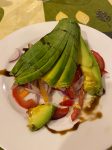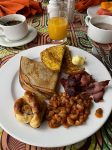Enthusiasts and prospective trekkers frequently inquire about the financial investment to climb Kilimanjaro. The most frequent question is “How much does it cost to climb Kilimanjaro?” It’s a valid inquiry, particularly when trekking is just walking. This, combined with Tanzania—the country where Kilimanjaro is located—is one of the world’s poorest countries.
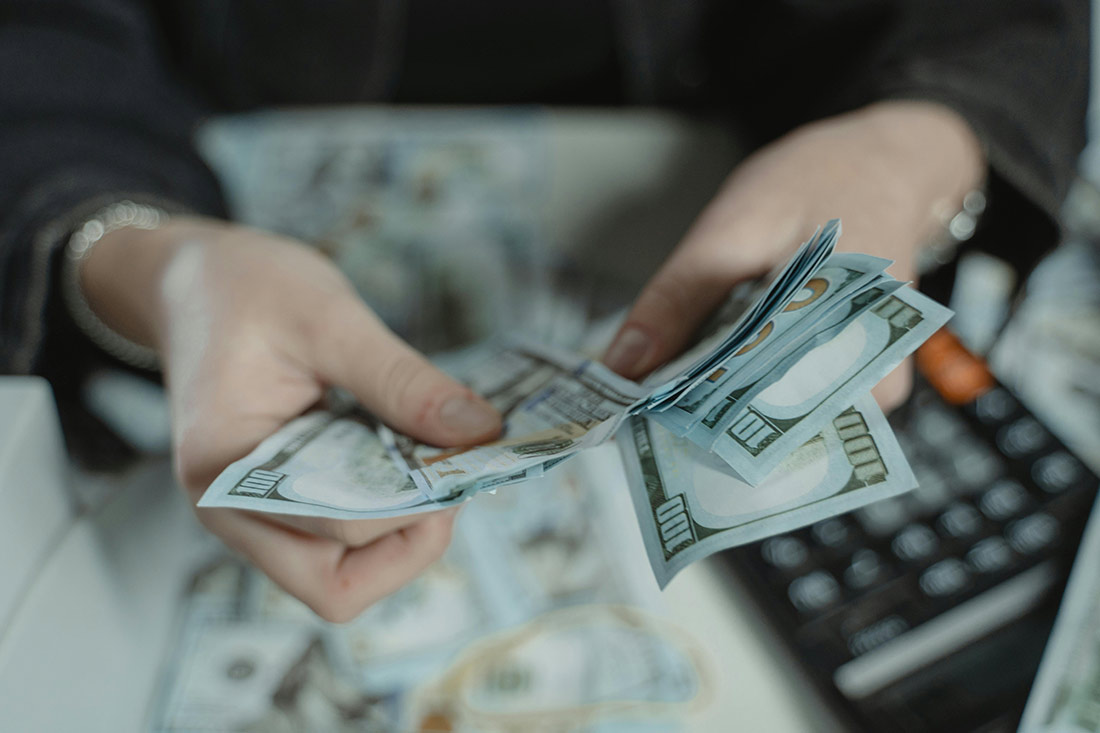
To address this question, it’s essential to understand the costs associated with planning and following through with a Kilimanjaro trek. The trek is the most significant portion of the expenses incurred during a trip to Tanzania.
At the lower end of the cost spectrum, the bare minimum cost to climb Kilimanjaro starts at approximately $1,200. However, this budget-friendly option often involves direct negotiations with local agencies, selecting basic routes like Marangu, and opting for shorter trek durations. Usually 5 days. Deviating from these parameters increases costs. A more realistic budget falls within the range of $2,500 to $3,500 per person for a decent trekking experience.
Before delving further into the specifics of what each price range entails, it’s crucial to dispel the notion that a higher price automatically equates to a greater likelihood of summiting Kilimanjaro. While increased costs may ensure access to safer trekking conditions, experienced guides, and better emergency equipment, they do not guarantee a successful summit bid. Rather, they enhance the prospects of a safe descent in case of adverse circumstances.
Once on the mountain, you won’t need to pay for anything else throughout the trek except tipping at the end.
Let’s explore the cost breakdown across different budget categories:
BUDGET OPERATOR
$1,200 – 1,500 USD
The cheapest way to organize a climb is to just show up at Kilimanjaro International Airport. From there hop into a taxi to Moshi or Arusha. Look up local companies and start negotiating. Keep in mind, that you need to have confidence in your bargaining skills.
Even at this bargain-basement price threshold, you should still get your park fees paid for. The price should also include all your meals on the mountain, a porter to carry your bag, and a guide to lead you. Transfers to and from the mountain should also be included. However, transportation at this budget level can be unreliable. Odds are you’ll have to find your way back to town after your trek.
If you book your trip in Moshi it is still possible to get a trek for $1,200. But this trek will be for just five days. We don’t recommend this and with a company that we won’t be able to recommend either. In short, it won’t be possible to guarantee the reliability or honesty of any company charging so little.
Furthermore, at this price, the cost of climbing Kilimanjaro won’t just be yours to bear. The company’s treatment of porters will be terrible. Their wages will be abysmal. If you decide to climb with one of these companies, you could always ease your conscience by giving higher tips. But then, of course, that negates any savings you have made by opting for the cheaper company in the first place.
$1,500 – 1,800 USD
At this price point, there’s a slight improvement. But only a slight one. You can still forget about finding a company that treats its mountain crew fairly or pays them well.
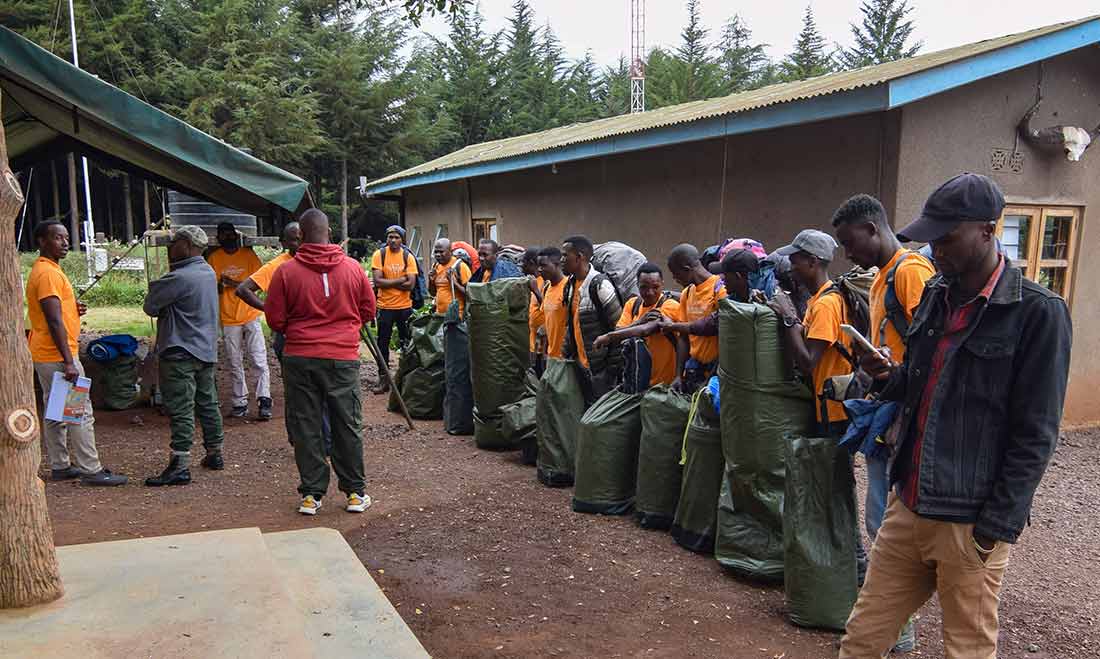
You’ll also have to do a five-day trek. But as we mentioned earlier, we don’t recommend a five-day trek. It’s simply too dangerous. It doesn’t allow you enough time to acclimatize safely. Read more here: https://kilimanjarosunrise.com/how-to-safely-summit-mount-kilimanjaro/
If you have only $1,500 or less for your trek, then our advice is to delay your trip. Save up some more money, and try another year.
$1,800 – 2,500 USD
At these prices, you will get a lot more choices. You should find several companies that are partners with the Kilimanjaro Porters Assistance Project (KPAP). In other words, you’ll have some reassurance that they will treat their staff well. The quality of the treks in this price bracket starts to improve exponentially too.
Companies may start to provide private toilets and dining tents, for example. The quality of food will improve as will the quality of the guides. Furthermore, they should also all carry oxygen with them.
If you’re on a tight budget, this is the price bracket to aim for. You will still probably have to take a 6-day trek rather than the preferred 8-day trek. The longer the trek, the greater your chance of acclimatizing safely and reaching the summit. The food, equipment, and service may not be of the highest quality either. But overall everything should be “good enough”.
Your trek should run reasonably well. Any dietary requirement you may have should be accommodated. Whether successful or not, you should return from your climb happy with the experience.
MID-RANGE OPERATOR
$2,500 – 3,300 USD
This is where the price point changes from Budget Operators to Mid-Range Operators. There are several very good value choices here. Most of the larger Tanzanian companies fall into this category. Several have their hotels now. One or two even have a lodge in one of the national parks. This means that you could be in their care from the moment you arrive at the airport until you fly home.
There’s a lot of competition in this price bracket. Some companies, therefore, try to distinguish themselves. This they may do by, for example, offering unusual routes. Or perhaps by offering packages that include a safari or sightseeing tour.
Some companies in this bracket will be KPAP partners. In other words, they treat their porters well and pay a fair wage. Some operators will also have guides who are WFR (Wilderness First Responder) certified. Which means they’ll have advanced first-aid training.
Some of these companies have ownership stakes held by individuals from Western countries. This fact brings comfort to some, who appreciate having someone they can relate to involved in the company. On the other hand, other trekkers favor companies that are entirely Tanzanian-owned.
One thing that improves in this price bracket from budget operators is that the safety procedures tend to be superior. Often trekkers will be monitored daily with a pulse oximeter. This measures the oxygen saturation in your blood which is a useful way of telling how well someone is coping with altitude. They should all have well-rehearsed evacuation procedures too. They should be able to tell you about it before you’ve even booked your trek.
Despite all their efforts at standing out from the crowd, usually, there can be little to distinguish between the companies in this bracket. Often people end up choosing to go with a company simply because they answered their emails more promptly. Or that they just happened to build a better rapport with them. Or they chose a company simply because it had a public trek advertised for the dates they wanted, and on the route they wanted too.
It’s fair to say that in this price bracket, you should be happy with pretty much everything in your trek package.
LUXURY OPERATOR
$4,000 USD and Above
This is the Luxury Operator price category. By the time you get to this price, things start to get very interesting. Most of the companies in this price bracket will be able to get away with charging this much because they are Kilimanjaro specialists. Some will have worked on the mountain for decades. Others will rightly boast of having established new routes on the mountain. Still others will boast of having highly trained and experienced guides, with hundreds of treks under their belt and a WFR (Wilderness First Responder) certification.
Most companies will be KPAP partners. If they charge this much and aren’t KPAP partners, then they need to explain why.
One or two companies may also offer such luxuries as showers, inflatable furniture in the dining tents, cots set up at each campsite, wifi hotspots, and smartphone chargers. These may sound like gimmicks, and indeed they are., but the companies in this price bracket should also be very good at the important things. They should cook exceptionally nutritious and tasty food on the mountain. They should have first-rate safety procedures and equipment. Their highly trained guides will speak excellent English. Most of the time they also have branded equipment, flags, and uniforms.
All these extra frills cost more, which is why you pay such a premium for their services.
Costs Off the Mountain
Aside from your trek cost, the main expenses of your trip will be:
- Flights – $900 and up.
- Obtain the required gear – varies
- Visas – $100 for US citizens
- Vaccinations (if necessary). May or may not be covered by insurance.
- Food and accommodation (lunch, dinner, and extra hotel nights)
- Safari – depends on the number of days and number of people
- Zanzibar – Depends on accommodations, travel, food, and excursions
- Trip Insurance – usually $200 and up
Away from the mountain and the other national parks, the most expensive place in Tanzania is Zanzibar.
Transport, food, and accommodation are pretty cheap in Tanzania, particularly in Moshi and Arusha.
Accommodation in Tanzania
Your trek operator should provide you with a couple of nights’ accommodation. After that, you can either book extra nights with them or opt to book accommodation yourself. Be careful if you choose your accommodations so you don’t end up in an unhygienic, seedy hotel.
At the other end of the spectrum, hotel rooms and luxury safari camps can go for $2,000 per night during the high season.
Food in Tanzania
Food in Tanzania is both delicious and inexpensive at restaurants and hotels. A decent meal starts at around $10.00.
We recommend avoiding street vendors since no one regulates their sanitary standards.
Final Thoughts
Whatever your budget is for climbing Kilimanjaro, keep in mind you get what you pay for. If safely summiting Kilimanjaro is your main goal then you’re going to pay at least $2,500 for the trek. If you want to have a greater chance of making the summit, book a longer route like the 8-day Lemosho or 9-day Northern Circuit routes. Both of these routes have an over 90% summit success rate.
If you want to know how we stack up against other companies. Read more here: https://kilimanjarosunrise.com/best-kilimanjaro-company/
Embark on a journey with Kilimanjaro Sunrise and experience the epitome of luxury while paying a fraction of the cost to climb Kilimanjaro. While we may not boast flashy branding, lavish showers, or inflatable furniture, we prioritize what truly matters: safety, exceptional food, top-notch equipment, and a team of seasoned experts to guide you every step of the way. Elevate your trekking experience with Kilimanjaro Sunrise and discover the remarkable difference that superior quality and service can make. Book now and ascend to new heights in style and comfort!

